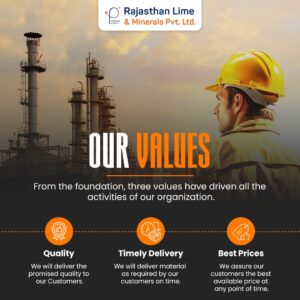SAP Plant Maintenance is a comprehensive software solution that streamlines and optimizes the management of assets in an organization. It is part of SAP Enterprise Resource Planning and is crucial to maintaining and managing the physical assets within an organization. We will examine the main features and benefits that SAP PM offers, as well as how it can help with asset management. SAP Plant Maintenance is a comprehensive software solution that streamlines and optimizes the management of assets in an organization. It is part of SAP Enterprise Resource Planning and is crucial to maintaining and managing the physical assets within an organization. We will examine the main features and benefits that SAP PM offers, as well as how it can help with asset management.
SAP PM Key Features:
-
Asset Management Data: SAPPM allows organizations to maintain and create a central repository of asset master information. Information about technical systems, equipment, and functional locations are included. A unified database provides accurate and current information to facilitate better decision-making.
-
Preventive maintenance: Planning and executing preventive maintenance is one of SAP PM’s core functionalities. Schedule routine inspections and maintainance activities to minimize unplanned downtime and extend asset lifespans.
-
Work order management: SAPPM enables the creation of work orders and their management for maintenance activities. It includes both planned and unplanned tasks, and the allocation of materials and resources required for the task. A well-managed work order ensures maintenance tasks are completed quickly and efficiently.
-
Integration With Other SAP Modules SAPPM seamlessly integrates other SAP modules such as Materials Management (MM), Finance (FI), and Accounting (A). This integration provides a holistic asset management approach, including aspects such as procurement of spare parts and cost tracking.
-
Mobile accessibility: As mobile technology grows, SAP PM offers mobile access, which allows maintenance teams to update work orders and conduct inspections while on the move. This increases the responsiveness and agility of maintenance operations.
Benefits of SAPPM:
-
Improved Asset reliability: Organizations using SAP PM are able to improve the asset reliability by implementing preventive maintenance. This leads to an increase in uptime, and a reduction of unplanned breakdowns.
-
Reduced Maintenance Costs The SAP PM capabilities of work order management, resource allocation and cost optimization contribute to the reduction of maintenance costs. The ability to better plan and assign resources can reduce unnecessary downtime, and minimize maintenance costs.
-
Enhanced reporting and analytics: This system generates comprehensive report and analytics that provide insights into asset performance and maintenance costs. This data-driven method allows organizations to make informed maintenance decisions and improve them continuously.
-
Regulatory compliance: SAPPM helps organizations adhere regulatory standards and requirements relating to asset management. This is especially important in industries that place a high priority on compliance with safety and environment regulations.
-
Productivity Increase: Automation of routine maintenance tasks, and the streamlined process result in an increase in productivity for maintenance teams. The organization can focus on strategic initiatives instead of being bogged down with manual and repetitive tasks.
Conclusion SAP Plant Maintenance can be a powerful asset management tool. Businesses can improve asset reliability and optimize maintenance costs by leveraging features like preventive maintenance, workflow management and seamless integration to other SAP modules. SAP PM is at the forefront of asset-management solutions as technology continues to advance. It provides a robust platform that allows organizations to remain competitive in a constantly changing business environment. SAP Course in Pune
SAP PM Key Features:
-
Asset Management Data: SAPPM allows organizations to maintain and create a central repository of asset master information. Information about technical systems, equipment, and functional locations are included. A unified database provides accurate and current information to facilitate better decision-making.
-
Preventive maintenance: Planning and executing preventive maintenance is one of SAP PM’s core functionalities. Schedule routine inspections and maintainance activities to minimize unplanned downtime and extend asset lifespans.
-
Work order management: SAPPM enables the creation of work orders and their management for maintenance activities. It includes both planned and unplanned tasks, and the allocation of materials and resources required for the task. A well-managed work order ensures maintenance tasks are completed quickly and efficiently.
-
Integration With Other SAP Modules SAPPM seamlessly integrates other SAP modules such as Materials Management (MM), Finance (FI), and Accounting (A). This integration provides a holistic asset management approach, including aspects such as procurement of spare parts and cost tracking.
-
Mobile accessibility: As mobile technology grows, SAP PM offers mobile access, which allows maintenance teams to update work orders and conduct inspections while on the move. This increases the responsiveness and agility of maintenance operations. SAP Classes in Pune
Benefits of SAPPM:
-
Improved Asset reliability: Organizations using SAP PM are able to improve the asset reliability by implementing preventive maintenance. This leads to an increase in uptime, and a reduction of unplanned breakdowns.
-
Reduced Maintenance Costs The SAP PM capabilities of work order management, resource allocation and cost optimization contribute to the reduction of maintenance costs. The ability to better plan and assign resources can reduce unnecessary downtime, and minimize maintenance costs.
-
Enhanced reporting and analytics: This system generates comprehensive report and analytics that provide insights into asset performance and maintenance costs. This data-driven method allows organizations to make informed maintenance decisions and improve them continuously.
-
Regulatory compliance: SAPPM helps organizations adhere regulatory standards and requirements relating to asset management. This is especially important in industries that place a high priority on compliance with safety and environment regulations. SAP Training in Pune
-
Productivity Increase: Automation of routine maintenance tasks, and the streamlined process result in an increase in productivity for maintenance teams. The organization can focus on strategic initiatives instead of being bogged down with manual and repetitive tasks.
Conclusion SAP Plant Maintenance can be a powerful asset management tool. Businesses can improve asset reliability and optimize maintenance costs by leveraging features like preventive maintenance, workflow management and seamless integration to other SAP modules. SAP PM is at the forefront of asset-management solutions as technology continues to advance. It provides a robust platform that allows organizations to remain competitive in a constantly changing business environment.













